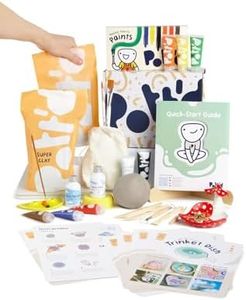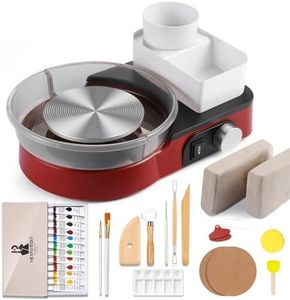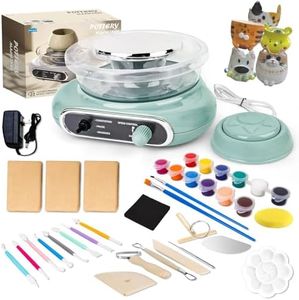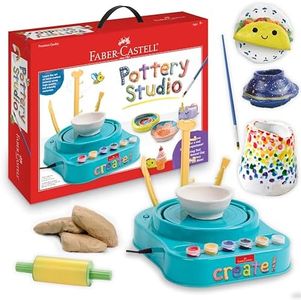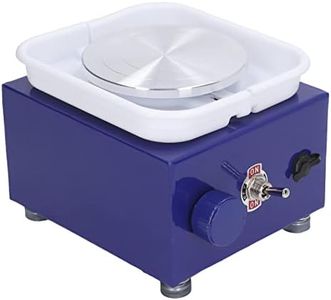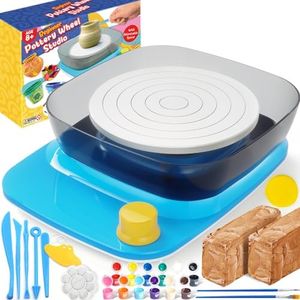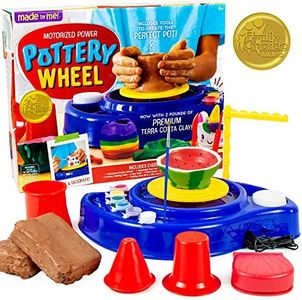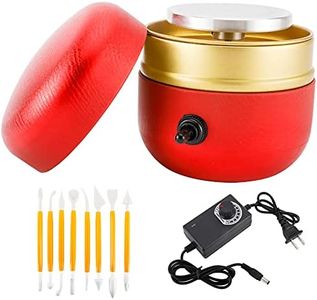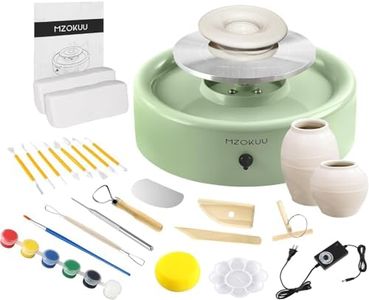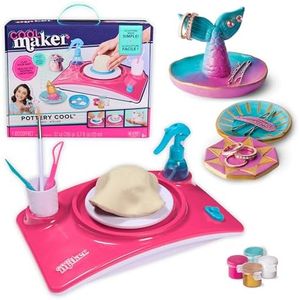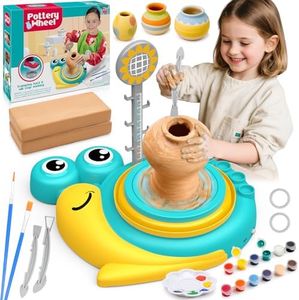We Use CookiesWe use cookies to enhance the security, performance,
functionality and for analytical and promotional activities. By continuing to browse this site you
are agreeing to our privacy policy
10 Best Pottery Wheel Kits
From leading brands and best sellers available on the web.Buying Guide for the Best Pottery Wheel Kits
Choosing a pottery wheel kit can be an exciting process, whether you're a beginner exploring ceramics for the first time or someone looking to hone their wheel-throwing skills. The right pottery wheel can make your creative journey smoother and more satisfying, but with so many options on the market, it's important to understand the different features and specifications that can impact your experience. By paying attention to the key details, you can ensure the kit you select is well-suited to your personal needs and ambitions in pottery.Wheel Head SizeThe wheel head is the flat, spinning surface where you place your clay. Its diameter affects how large or small your projects can be. Generally, small wheel heads (around 8-10 inches) are ideal for making cups, bowls, and other compact items, while larger wheel heads (12-14 inches or more) are better for bigger pieces like vases or plates. If you mostly plan to make small projects or are just starting out, a smaller wheel head might be enough, but if you dream of working with bigger pieces, opt for a larger size.
Motor PowerThe motor power determines how much clay you can comfortably work with without the wheel slowing down or stalling. It's usually measured in watts or horsepower. Lower-powered motors are fine for beginners focusing on light projects and smaller amounts of clay (often less than 10 lbs). Medium motors handle most hobbyist needs, managing larger batches up to 25 lbs. Higher-powered wheels, suitable for experienced users or those working with large, heavy pieces, offer more stability with over 30 lbs of clay. Think about what types of items you'll want to create: frequent use and larger pieces will benefit from a stronger motor.
Speed ControlSpeed control describes how you adjust how fast the wheel spins. Some wheels have basic knob or lever-operated speed settings, while others use foot pedals for more precise, hands-free adjustment. Beginners may appreciate simple, steady speed controls, while more experienced potters often value the nuance and flexibility of pedal-based control. Consider whether you want fine control as you gain experience or if you’re comfortable with simpler speed adjustments while you learn.
Portability and WeightPottery wheels vary in size and weight. Heavier, sturdier models are often more stable, especially during intense work, but they’re harder to move or store. Lightweight or portable wheels can be easier to set up, store, or transport—great if space is limited or you want to take your kit to classes or different locations. If you plan to keep your wheel in a dedicated studio, heavier options are fine; if you need flexibility, choose a lighter design.
Included AccessoriesMany kits come with accessories such as clay, trimming tools, splash pans, and instructional booklets. These extras can be valuable for beginners, helping you get started right away without needing to buy additional items. Experienced users may prioritize high-quality basic tools over quantity. When choosing, look at what’s included and whether it matches your skill level and what you want to try first.
Noise LevelThe amount of noise a wheel makes can affect your enjoyment, particularly if you want a peaceful experience or share a space with others. Quiet wheels are less distracting and better for home environments. Noise level is usually noted by reviewers or manufacturers. If noise annoys you or you need to keep disturbances minimal, prioritize a quieter wheel.
Ease of CleaningPottery can be messy, so a wheel with removable splash pans or components that are easy to wipe down makes cleanup much simpler. Look for wheels designed with easy access to catch trays and smooth, wipeable surfaces if you value a quick and simple post-throwing routine.
